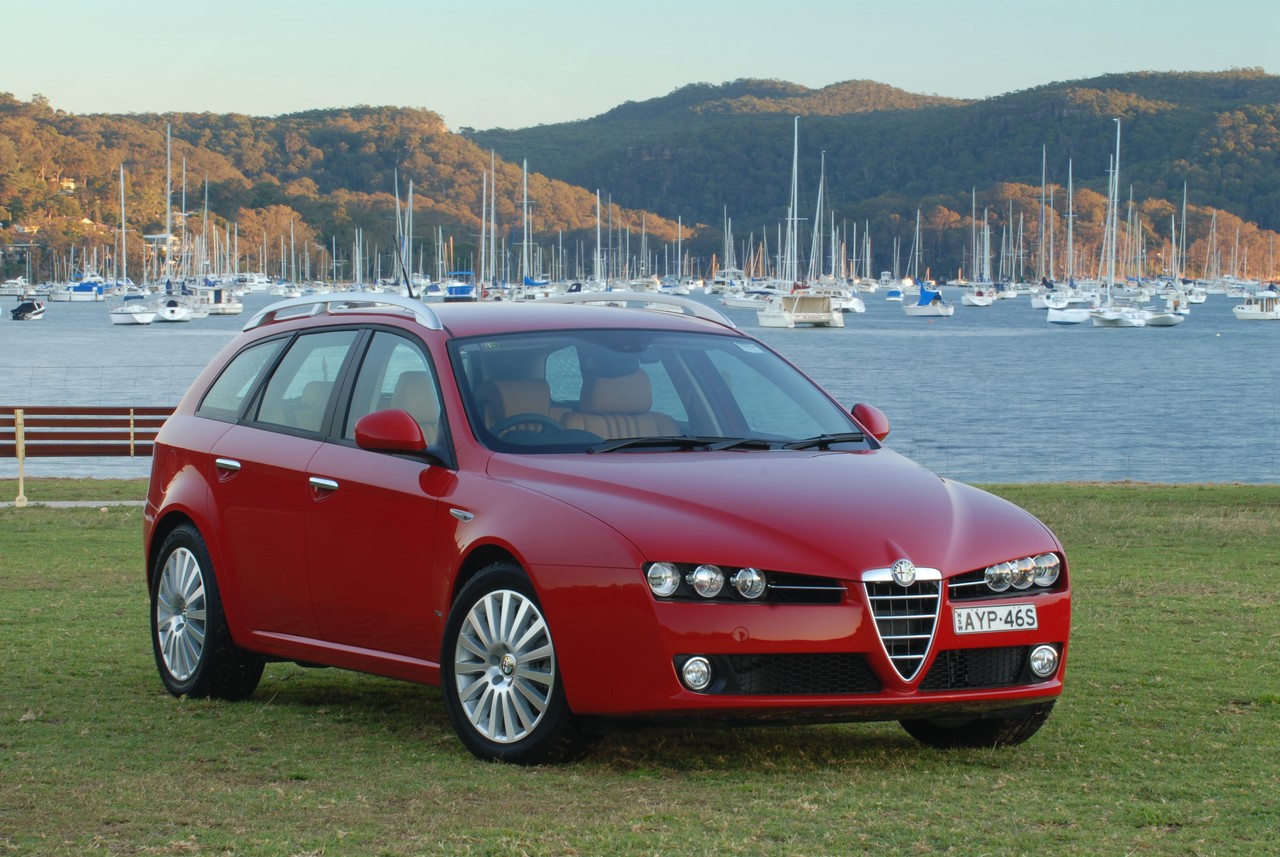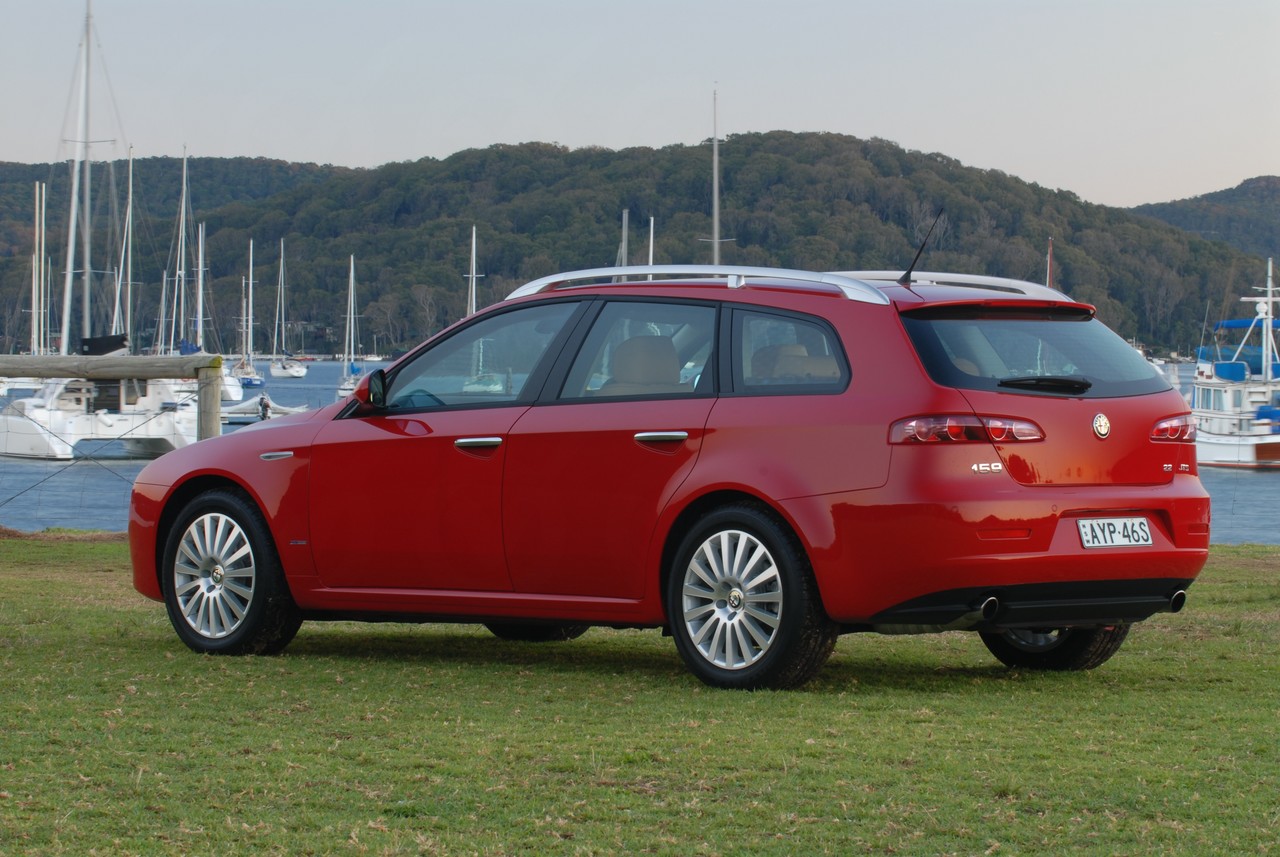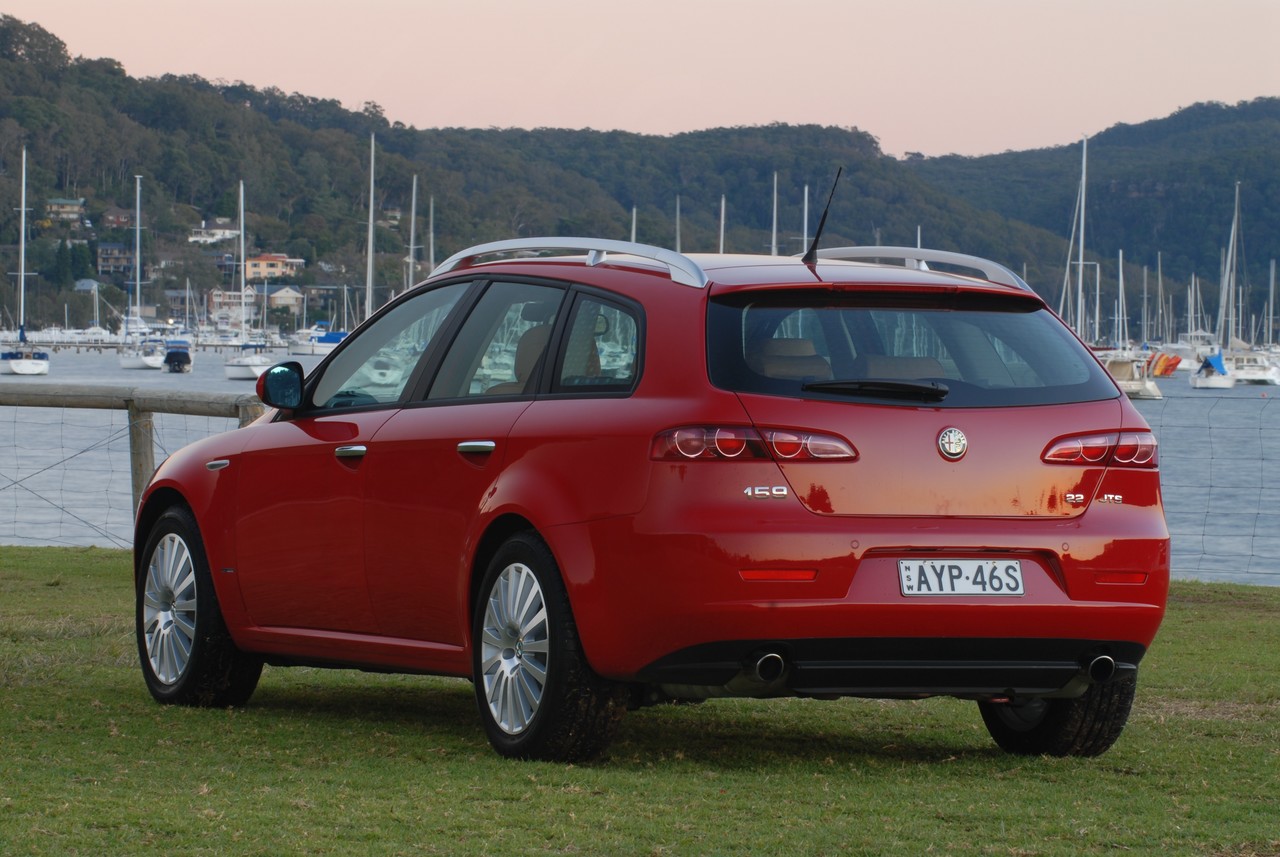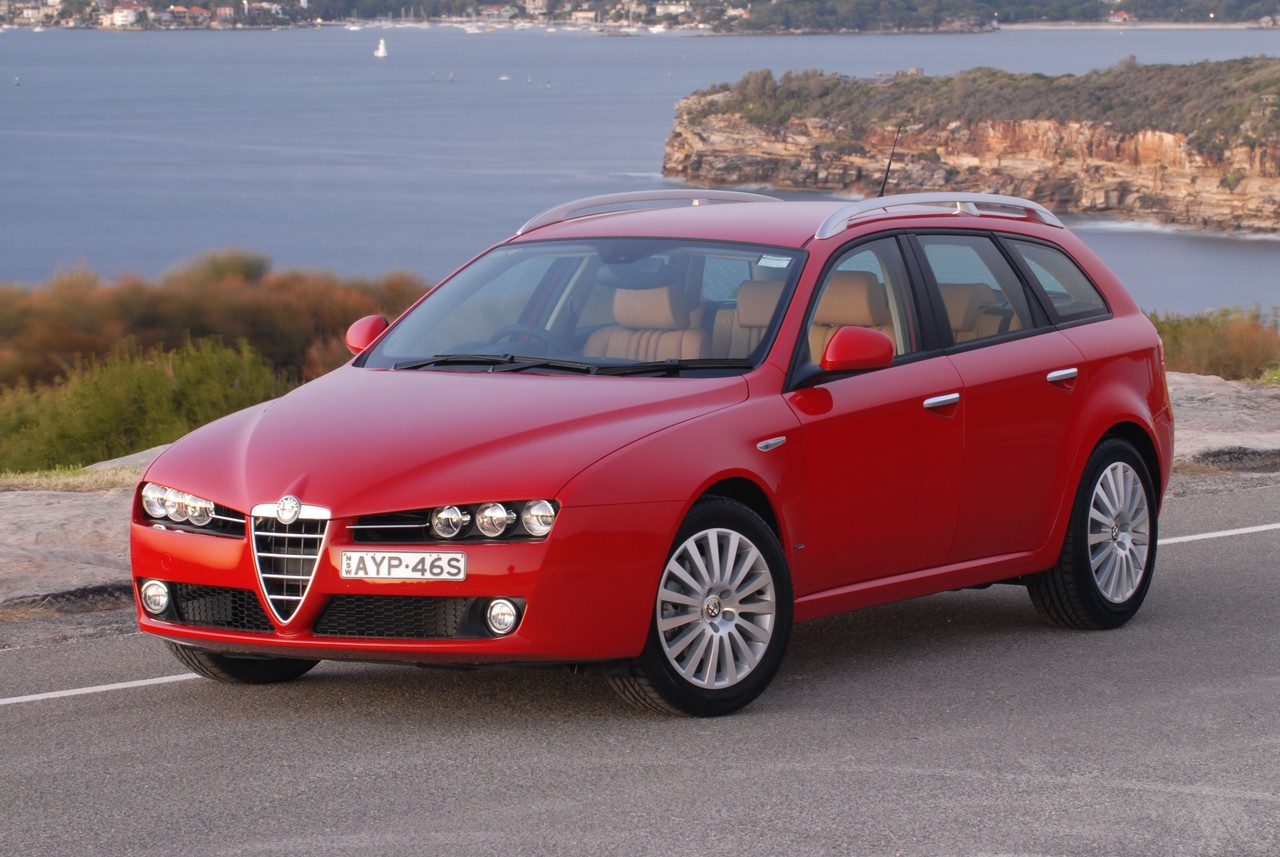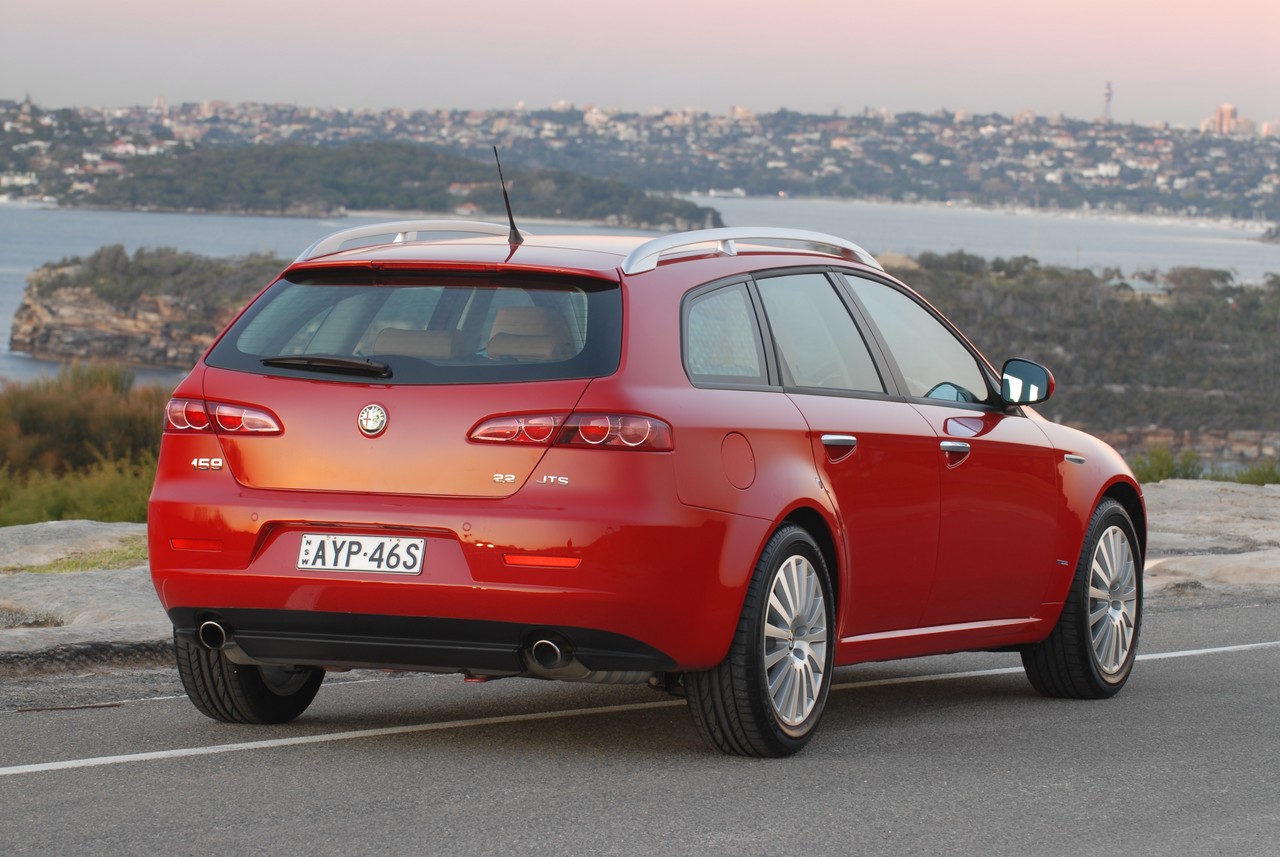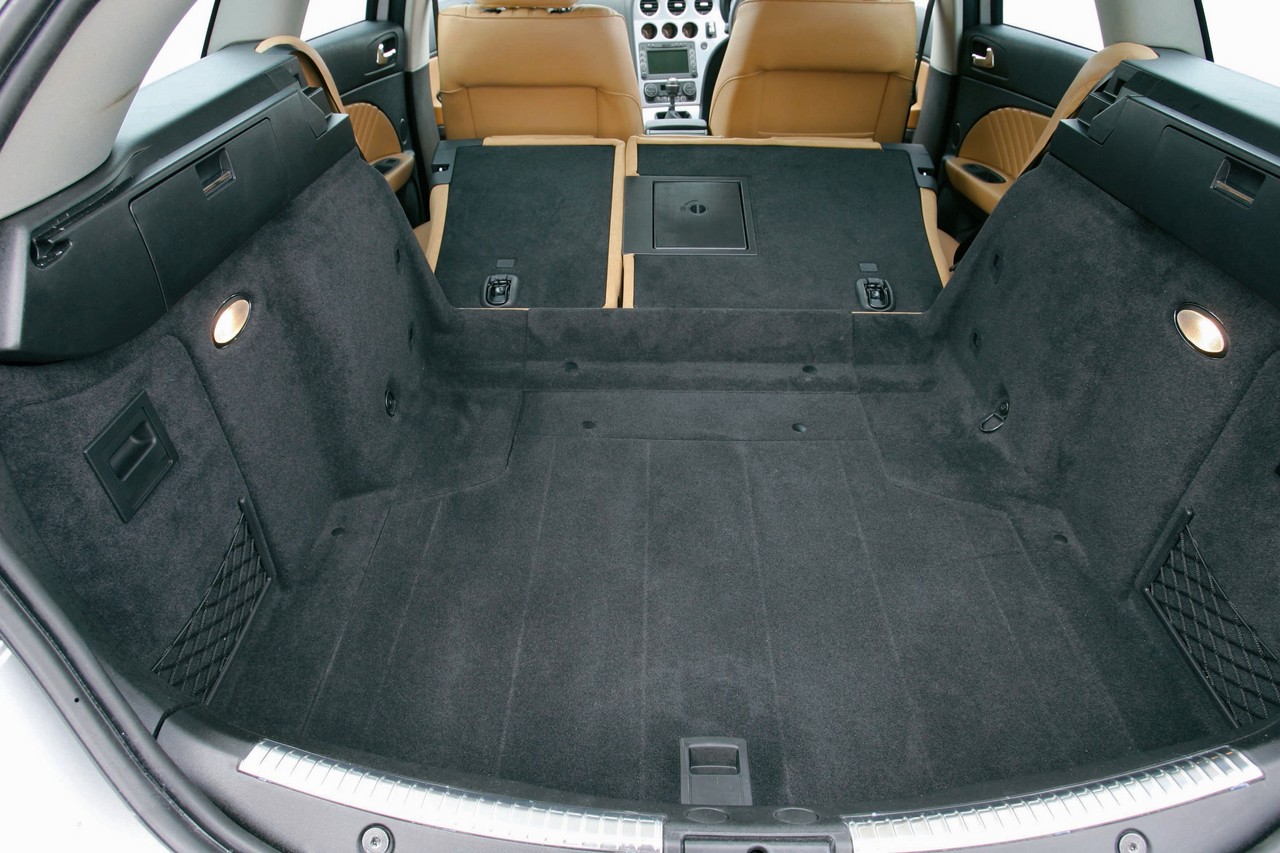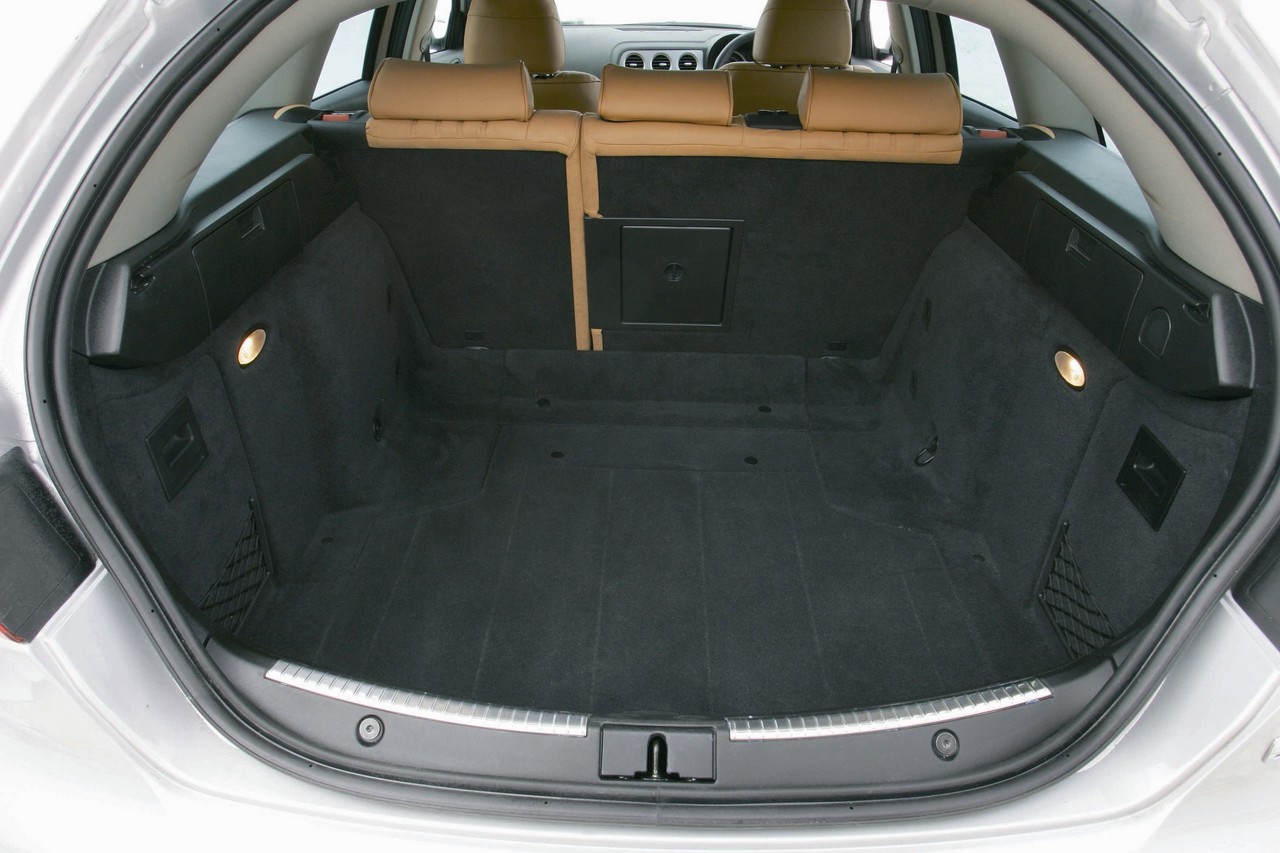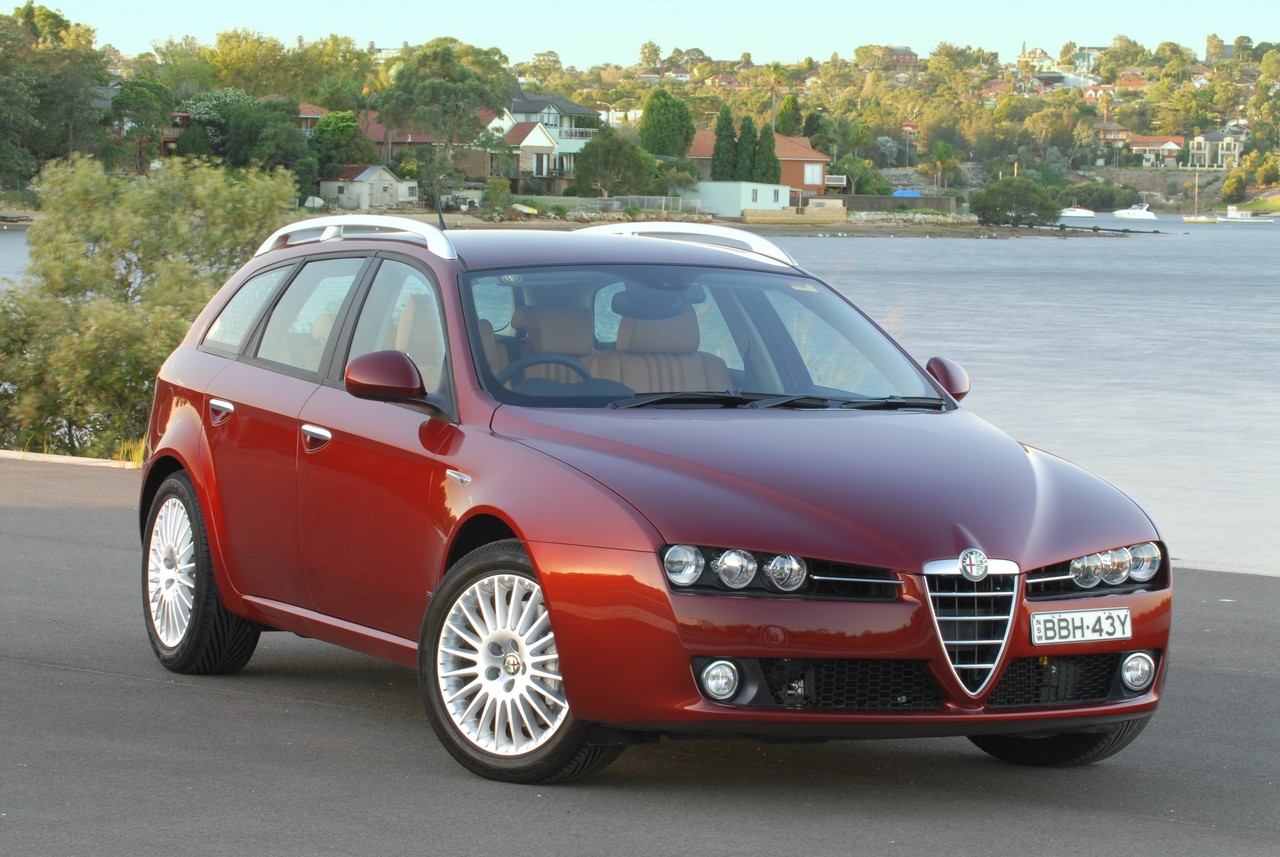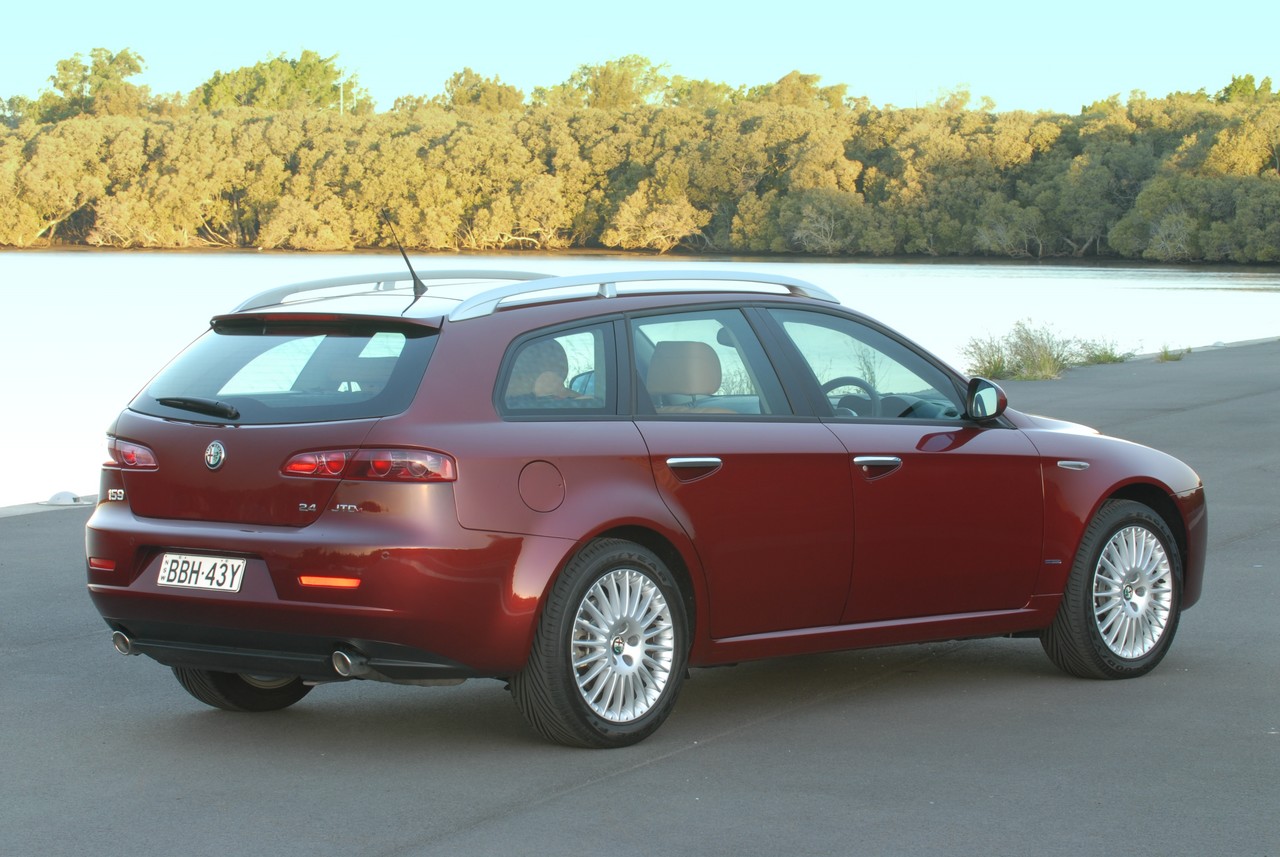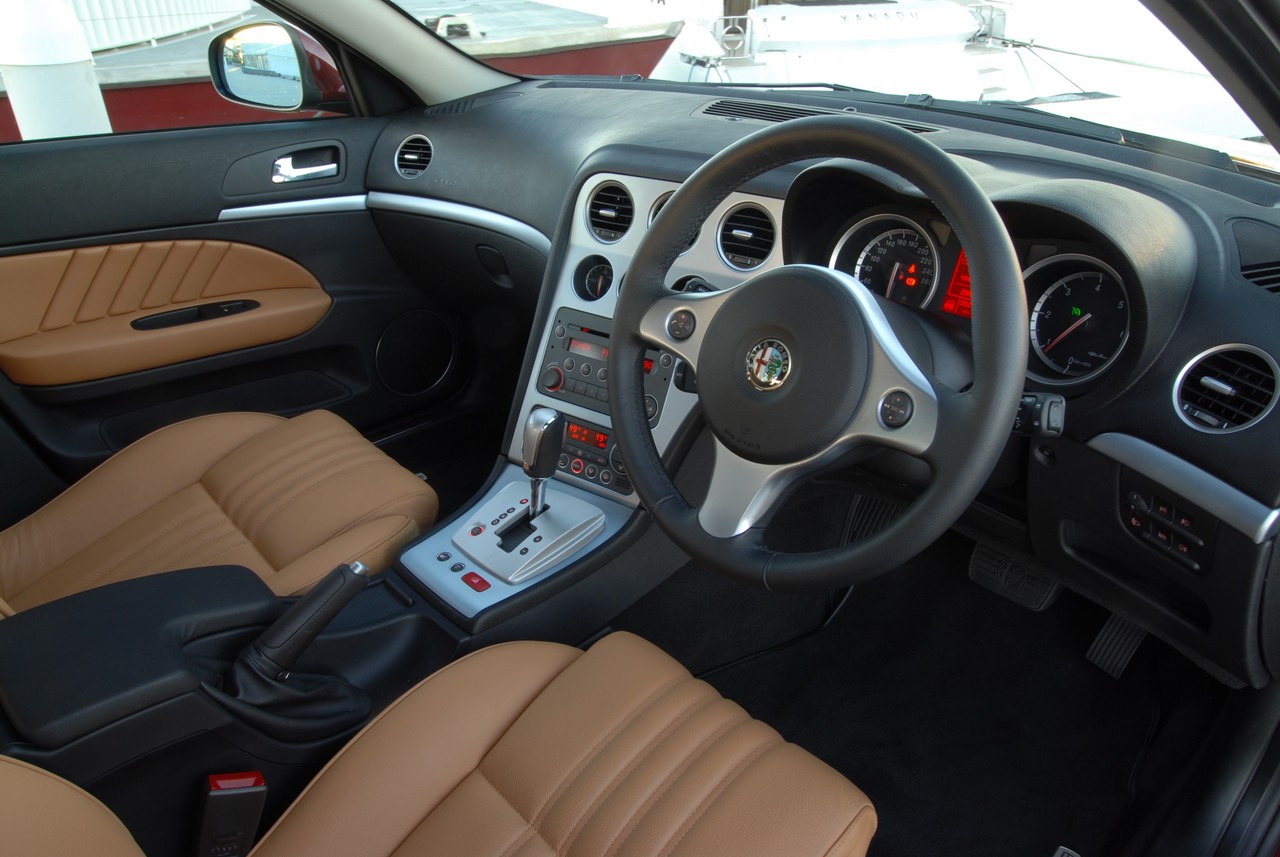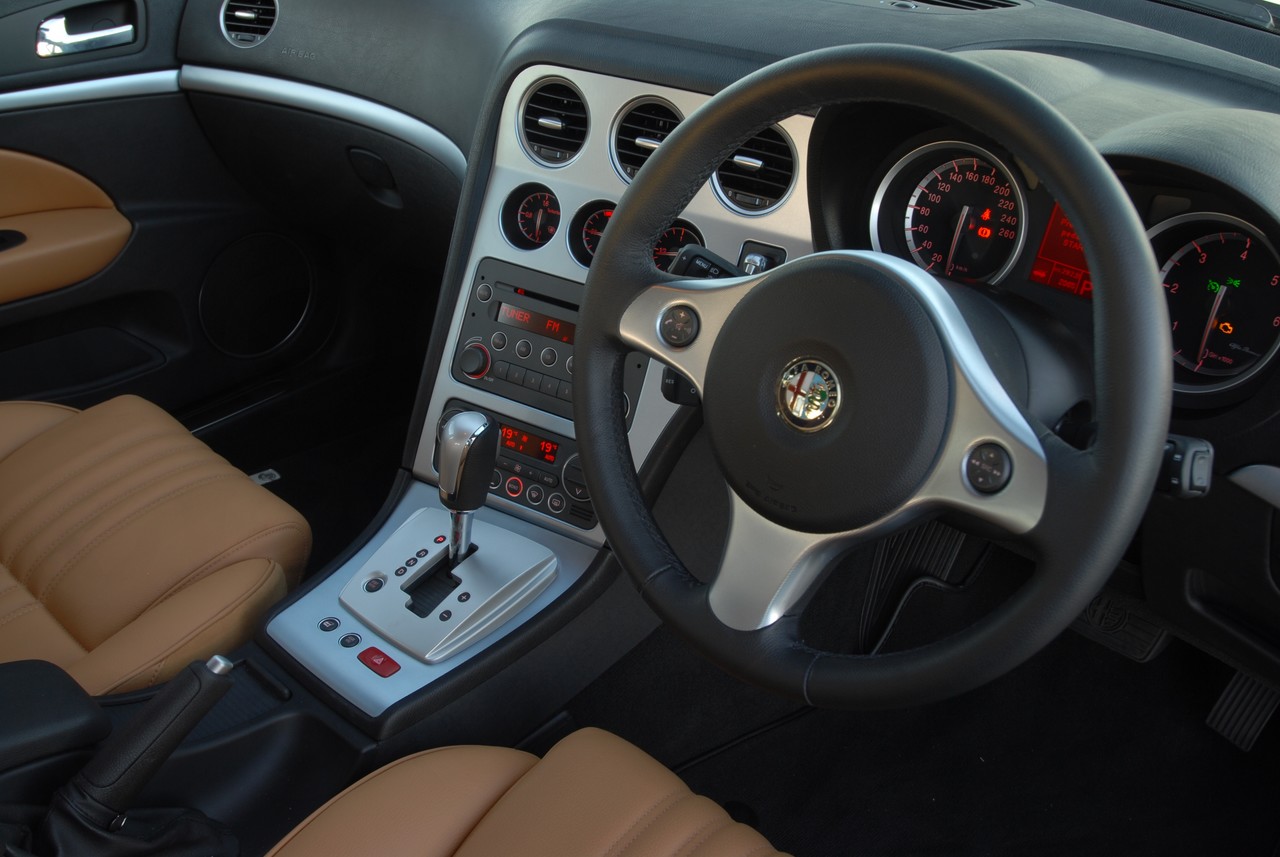
- Engaging driving experience
- Exquisite styling
- Sweet-sounding V6 engine
- 2.4-litre turbo-diesel is responsive and economical
- Notchy manual gearshift
- Odd steering weighting for 159 JTS
- Nose-heavy 159 JTD understeers
- For 2.2 JTS engine, reports of stretched timing chains
Overview
Released in June 2006, the Alfa Romeo 159 was available as a Sportwagon or sedan . Manufactured in Pomigliano d’Arco, Italy, the 159 Sportwagon range initially consisted of the front-wheel drive 2.2 JTS and 2.4 JTD variants and the four-wheel drive 3.2 JTS. In 2007, the range was expanded with the 1.9 JTD. In January 2009, the 159 range underwent a minor update and, in December 2010, the 2.2 JTS was replaced by the 1750 TBi.
Engines: 2.2 JTS, V6, 1750 TBi and JTD
Of the engines,
- The 2.2-litre JTS (‘Joint Thrust Stoichiometric’) inline four-cylinder petrol engine had an aluminium alloy block and head, direct injection, chain-driven double overhead camshafts, variable valve timing for the intake and exhaust camshafts, four valves per cylinder and a compression ratio of 11.3:1;
- The 3.2-litre JTS V6 petrol engine had similar attributes albeit with a compression ratio of 11.25:1;
- The 1750 TBi inline turbocharged four-cylinder petrol engine had direct injection, roller rocker arms integrated into the cylinder head, double overhead camshafts, variable valve timing for the intake and exhaust camshafts, four valves per cylinder and a compression ratio of 9.5:1;
- The 1.9 JTD diesel engine had a Garrett turbocharger with a variable geometry turbocharger, common-rail direct injection (at 1400 bar), double overhead camshafts, four valves per cylinder, a diesel particulate filter and a compression ratio of 17.5:1; and,
- The 2.4 JTD and JTDm diesel engines both had a KKK 2080 turbocharger with a variable geometry turbine, common-rail direct injection, double overhead camshafts, four valves per cylinder, a diesel particulate filter and a compression ratio of 17.0:1. For the JTDm engines, Alfa claimed that low-end performance was improved and new software improved the operation of the optional six-speed automatic transmission.
The 159 Sportwagon was initially available with manual transmissions, though semi-automatic Selespeed and ‘Q-Tronic’ automatic transmissions – the latter with a sequential shift function – were introduced in 2007.
Dimensions and suspension
Compared to the 156 Sportwagon , the 159 Sportwagon was 230 mm longer (at 4660 mm), 83 mm wider (1828 mm), 8 mm lower (1422 mm) and had a 105 mm longer wheelbase (2700 mm). The 159 Sportwagon had double wishbone front suspension that was connected to the chassis via a subframe and independent, multi-link rear suspension.
| Variant | Engine | Trans. | Year | Peak power | Peak torque |
|---|---|---|---|---|---|
| 1750 TBi | 1.7-litre turbo petrol I4 (939B1.000) |
6sp man. | 2011-12 | 147 kW at 5000 rpm | 320 Nm at 1400 rpm |
| 2.2 JTS | 2.2-litre petrol I4 (939A5.000) |
6sp man. | 2006-09 | 136 kW at 6500 rpm | 230 Nm at 4500 rpm |
| 6sp S/speed | 2007-09 | ||||
| 1.9 JTD | 1.9-litre turbo-diesel I4 (939A2.000) |
6sp man. | 2007-09 | 110 kW at 4000 rpm | 320 Nm at 2000 rpm |
| 6sp auto | 2007-10 | ||||
| 2.4 JTD | 2.4-litre turbo-diesel I5 (939A3.000) |
6sp man. | 2006-08 | 147 kW at 4000 rpm | 400 Nm at 2000 rpm |
| 6sp auto | 2007-09 | ||||
| 2.4 JTDm | 2.4-litre turbo-diesel I5 (939A3.000) |
6sp auto | 2009-12 | 154 kW at 4000 rpm | 400 Nm at 2000 rpm |
| 3.2 JTS | 3.2-litre petrol V6 (939A0.000) |
6sp man. | 2006-08 | 191 kW at 6200 rpm | 322 Nm at 4500 rpm |
| 6sp auto | 2007-12 |
Q4 AWD system
The 3.2 JTS was fitted with Alfa Romeo’s ‘Q4’ permanent four-wheel drive system, which consisted of three differentials, including a self-locking Torsen centre differential. The default front/rear torque split was 43:57, though up to 72 per cent of the engine’s torque could be directed to the front axle and up to 78 per cent directed to the rear axle according to conditions.
Safety equipment
Standard safety equipment for the 159 Sportwagon included dual front airbags, driver’s knee airbag, front side airbags, full length curtain airbags (i.e. for front and rear passengers), ABS, brake assist, electronic brake force distribution, electronic stability control, traction control, hill holder function and front seatbelts with pretensioners and load limiters.
Brakes
The standard braking package for the 159 consisted of 305 mm ventilated front brake discs and 278 mm solid rear discs. The 2.4 JTD, 2.4 JTDm and 3.2 JTS variants, however, were fitted with 330 mm ventilated front brake disc with Brembo four-piston aluminium calipers and 292 mm ventilated rear brake discs.
Euro NCAP crash testing
In Euro NCAP testing , a 2006 159 sedan received a five star adult occupant protection rating with a score of 33.84 out of 37. In the offset crash test, there was a slight risk of serious chest and leg injury for the front occupants. In the side impact test, there was a slight risk of serious chest injury for the driver. In the pole test, however, maximum points were awarded.
Features
Standard features for the 159 Sportwagon included 17-inch alloy wheels, an eight speaker stereo with a ten-disc CD player, dual-zone climate control air conditioning, leather seats, cruise control, rear parking sensors, automatic headlights, a leather-wrapped steering wheel, 60/40 split and folding rear seats, remote central locking, power windows and heated mirrors, power folding door mirrors, a height and reach adjustable steering wheel, height adjustable driver’s seat, an auto-dimming rear view mirror, a trip computer, 12 volt power outlet and an immobiliser.
Beyond this, the 3.2 JTS was fitted with 18-inch alloy wheels, a 570 watt Bose sound system with a six-channel 200 watt digital amplifier, ten speakers (including a subwoofer) and a USB input, power adjustable front seats with memory settings, heated front seats, xenon headlights with washers and Bluetooth mobile phone connectivity.
159 Sportwagon Ti
In August 2007, limited run Ti editions were released of the sedan models. The Ti editions were distinguished by their 19-inch alloy wheels with 235/40 tyres, sports suspension (20 mm lower), red-painted brake calipers, soft Italian black leather upholstery, sports bodykit, ‘burnished aluminium finish’ wing mirrors, interior aluminium highlights.
The 2.2 JTS Ti models also fitted with features previously restricted to the 3.2 JTS, including the Brembo braking package, power adjustable front seats with memory settings, heated front seats, USB connection and Bluetooth mobile phone connectivity. Ti editions were again released in July 2008; on this occasion, Sportwagon models and the 2.4 JTD were offered in Ti editions.
2009 and 2011 updates
The 159 Sportwagon range was updated in January 2009 with the following changes:
- Introduction of the 2.4 JTDm engines;
- Suspension revisions for improved ride quality;
- Additional sound insulation material to reduce transmission noise;
- Revised instruments and ventilation controls;
- A one-touch start button; and,
- Re-shaped rear seats and a more compact roof lining with new fabric finishes.
Visually, the post-2009 Alfa Romeo 159 Sportwagon could be identified by its roof-mounted aerial.
From 2011, Bluetooth mobile phone connectivity was standard across the range.
Brochures
- Brochure: Alfa Romeo 159 Sedan and 159 Sportwagon (January 2008)
- Brochure: Alfa Romeo 159 Sedan and 159 Sportwagon (May 2009)
Related links
- Press Kit: Alfa Romeo 159 Sportwagon (July 2006)
- Press Kit: Alfa Romeo 159 Sportwagon 1750 TBi (February 2011)
- Wikipedia.org: Alfa Romeo 159
